Ancient people firmly believed that nature gave man everything he needed for healing. Relying partly on intuition, they chose foods that visually resembled human organs and ate them, believing in their benefits.
The methods and tools at the disposal of modern science confirm that such an approach is not without merit, since there are various organ products that have been proven to be useful in the course of research. Therefore, estet-portal.com will talk about herbs, vegetables and fruits, which not only look like human organs, but are also useful for them.
Signature Teachings: Organs Benefit From Products That Look Like Them
The theory of signatures (the doctrine of signatures) appeared in antiquity, when healers associated the visual characteristics of the gifts of nature with various parts of the human body and used this kind of "hints" for medicinal purposes.
Follow us on Instagram!
According to this theory, foods that look like organs of the human body help in promoting their health and curing diseases. Such signatures are based on the color, texture, shape of vegetables, fruits and herbs, as well as the characteristics of the environment in which they grow.
The theory of signatures (the doctrine of signatures) appeared in antiquity, when healers associated the visual characteristics of the gifts of nature with various parts of the human body and used this kind of "hints" for medicinal purposes.
Of course, this theory is not scientifically confirmed, and many of the similarities and useful properties of products determined with its help are far-fetched. However, there are also scientifically proven cases when such a connection cannot be denied.
Foods useful for organs: plants and roots
It is impossible not to note the similarity between ginger and the human stomach. No wonder this plant is used to improve digestion, from motion sickness and for the treatment of diseases of the gastrointestinal tract.
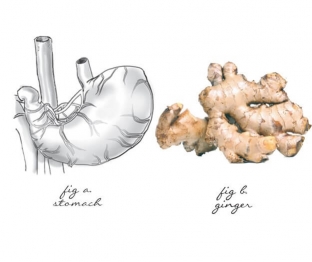
According to the signature theory, not only the shape, color, texture, seeds and leaves of a plant can determine their medicinal properties, but also their smell and the location in which they are grown.
Thus, plants that grow in or near water (such as mint, willow, and verbena) are believed to help treat "wet" illnesses such as coughs and colds; and plants from the marshland are good for the respiratory and reproductive systems.
Read also: 9 organ-like foods they are good for
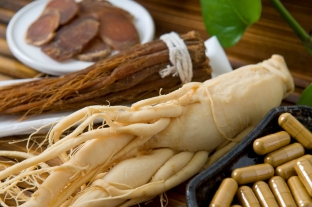
Ginseng root is incredibly human-like and has a lot of healing properties – suppresses inflammation, tones, increases blood pressure, lowers cholesterol, improves blood circulation, normalizes hormonal balance, etc.
Foods good for organs: fruits and vegetables
A walnut is visually a miniature of the human brain. Science has proven that nuts – one of the best products for promoting brain development and maintaining cognitive functions.
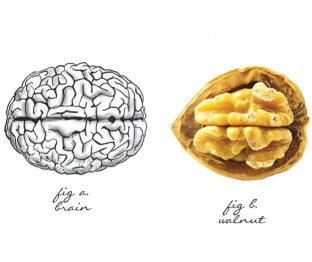
Our grandmothers also advised us to eat carrots to improve our eyesight. Despite the fact that carrots by themselves will not make you more vigilant, with regular use of this product, the organ of vision receives certain benefits – improves blood flow to the eyes. Actually, in cross section, the carrot really resembles an eye.
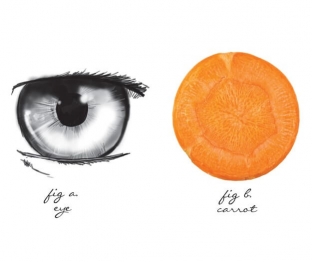
Celery – an incredibly useful plant, including for the bones to which it is so similar. Regular use of this product helps to strengthen the skeleton and reduces the risk of osteoporosis.
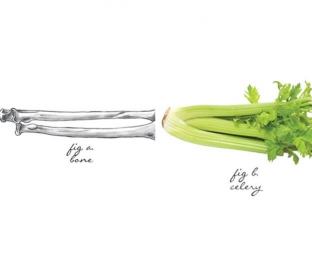
In anatomy textbooks, the kidney is described as a bean-shaped organ, and regular consumption of beans helps maintain normal "filter" function. our body.
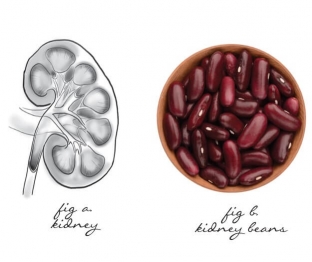
Avocado is considered to be a very useful product for the organs of the female reproductive system. Firstly, it takes exactly 9 months for this fruit to ripen, and secondly, a ripe avocado visually resembles a womb. Regular consumption of avocados is very important for women's health, as this fruit helps maintain hormonal balance, reduces the risk of cervical cancer, and is beneficial during pregnancy, among other things, due to the content of folic acid.

Another good food for women's reproductive organs is olives, which help maintain ovarian health.
As for the female breast, citrus fruits are also beneficial for her, which reduce the risk of developing cancer.
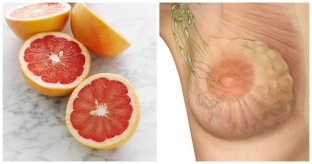
Sweet potatoes are shaped like the pancreas and are beneficial for diabetics.
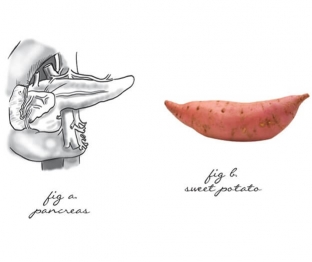
Some pomegranate looks like a heart, others associate it with the ovaries or mammary glands. Chinese doctors believe that the red color of the pomegranate indicates its benefits to the heart. Ultimately, all of these theories may be true, as science has proven many benefits of pomegranate, including for the cardiovascular, reproductive system and breasts.
Onions are also on the list of foods that are good for the organs they look like. The bulb is multi-layered, like human skin, and helps cleanse it of harmful substances.
Grapes resemble the alveoli of the lungs, and science confirms that these "minibombs of goodness", containing large amounts of resveratrol, have a beneficial effect on the condition of the epithelial cells that line the lungs and trachea. Regular consumption of grapes helps with asthma and other bronchial diseases. In addition, grapes or grape juice helps to neutralize carcinogens in the body.
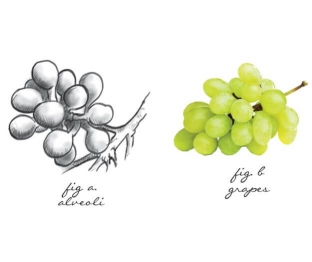
The main reason for the benefits of this product for whole body organs are two types of polyphenols, which inhibit growth and can even destroy cancer cells. What's more, the bioflavonoids found in the skins of dark grapes contribute to strengthening the immune system.
Cauliflower – another superfood that reduces the risk of cancer and supports bronchial health. Carotenoids, flavonoids and sulfur, which are rich in almost all types of cabbage, contribute to the health of the whole organism.
Read also: 8 most powerful anti-inflammatory foods
This similarity of products with the organs for which they are useful, perhaps, helped our ancestors in choosing natural medicines. Modern medicine has scientifically based data on the benefits of various fruits, vegetables and herbs, but it is amazing how accurately their healing properties were discovered many years ago.






Add a comment